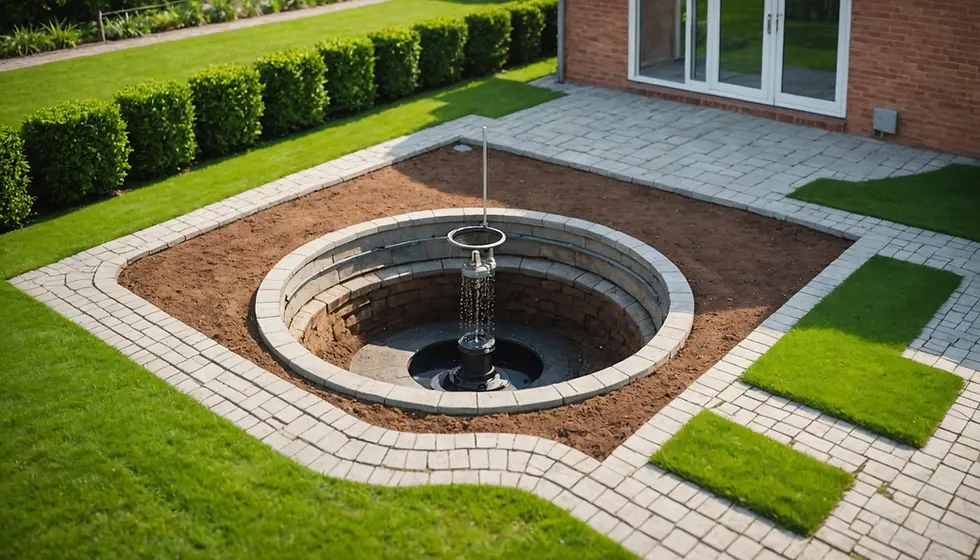How to Lay Sod in a Staggered Pattern for Minimal Waste: A Homeowner's Guide
- Garrett Williams
- Jan 15
- 3 min read
Updated: Jul 19
Transforming your backyard with new sod can turn a dull space into a vibrant, green lawn that boosts your home's curb appeal. Yet, many homeowners feel overwhelmed by the process, especially when it comes to minimizing waste. This guide will provide a clear, step-by-step approach to installing sod using a staggered pattern, ensuring you get the most out of your investment.
Understanding the Benefits of Staggered Sod Laying
Laying sod in a staggered pattern is not just about looks; it comes with numerous benefits. A staggered arrangement offers a more natural appearance, similar to how bricks are laid in masonry. This method reduces visibility between seams and enhances the structural integrity of your lawn. For instance, studies indicate that staggered layers can improve water retention by up to 30%, crucial in hotter climates.
By utilizing this technique, you can also minimize your sod requirements, making your project more efficient and cost-effective. It ensures you use virtually every piece you purchase while enhancing the overall health of your lawn.
Preparing Your Lawn for Sod Installation
Successful sod installation relies heavily on thorough preparation. Here’s how to get your yard ready:
Choose the Right Type of Sod: Selecting the ideal type is crucial. For homes in Arkansas, you might consider Bermuda or Zoysia grass, known for their durability. Consult local lawn care experts to make informed decisions based on your specific area.
Clear the Area: Remove old grass, rocks, and debris. Using a sod cutter can expedite the task, especially in overgrown areas.
Level the Soil: An even surface is vital for optimal drainage and root establishment. Uneven soil can lead to pooling water and unhealthy sod.
Soil Preparation: Test your soil to understand its pH and nutrient levels. Homeowners often find that adding 1-2 inches of compost enriches the soil significantly, leading to healthier grass.
Irrigate the Soil: Soak the area before laying sod. Ample moisture ensures the sod will establish well in its new environment.
How to Measure and Plan for Staggered Laying
With your lawn prepared, it’s time to plan the sod layout:
Calculate Your Sod Needs: Measure the area where you'll lay the sod. For example, if your yard is 600 square feet, you’ll need approximately 80-90 pieces of standard sod (16 square feet per piece) to cover it efficiently.
Draw a Basic Layout: Create a simple diagram marking where you will lay the sod. Keeping each row staggered means that if one sod piece is 2 feet long, the following row should start with a half piece, creating an offset layout.
Preparation for Cuts: Identify sections that may need trimming beforehand. Having a utility knife ready will make adjustments more straightforward and prevent excess waste.
Laying Sod in a Staggered Pattern
Now that everything is set, it’s time to lay the sod:
Start in a Straight Line: Begin at the edge of the yard. A sidewalk or driveway can serve as a guide.
Stagger the Second Row: Start the second row with half a piece of sod. This displacement helps achieve the staggered effect while keeping seams tightly pressed.
Continue the Pattern: Repeat this method throughout the lawn. Carefully align each section to minimize visible seams, enhancing water retention.
Trim Edges as Needed: Use your utility knife to tidy up the edges for a cleaner look.
Water Immediately: After laying all the sod, water it thoroughly. This is crucial for the grass to settle and encourage root growth.

Tips for Effective Sod Maintenance
Once the sod is laid, it’s essential to maintain it for long-term success:
Initial Watering Schedule: Water daily for the first week. After the roots are established, you can adjust your watering schedule based on weather conditions.
Mowing: Let your grass reach about 3 inches in height before mowing. This typically takes around 14 days. Ensure your mower blades are sharp to keep the grass healthy.
Fertilization: Apply a slow-release fertilizer a few weeks after installation. This will provide necessary nutrients for robust growth.
Weed Control: Keep an eye on weeds. Early intervention can prevent them from taking over your new lawn, which can cause stress to your grass.
Getting Started on Your Dream Lawn
Laying sod in a staggered pattern is a straightforward method that enhances your lawn’s beauty while optimizing resources. By preparing well and following the steps outlined in this guide, you can create a stunning lawn that contributes to your home’s value and provides a space for family and friends to enjoy.
With dedication and care, your new lawn will flourish into a green oasis, inviting outdoor activities and fostering a lasting connection with nature. Consider this guide a stepping stone toward transforming your backyard into a vibrant landscape!




Comments